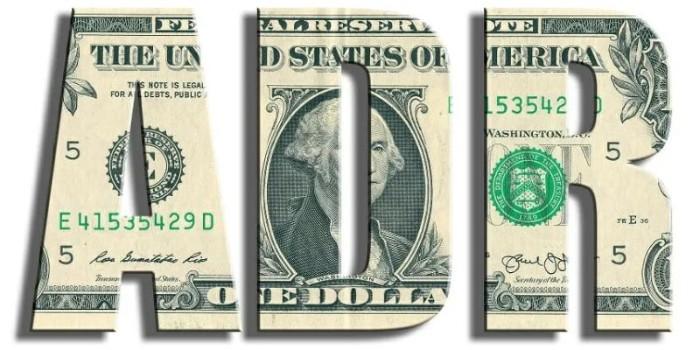Global vs. American Depositary Receipts
Jul 29, 2023 By Rick Novak
Understanding the differences between these two types of instruments is important to ensure that your investment goes into a compliant and safe instrument.
In this blog post we will discuss the similarities and differences between GDRs and ADRs including what they are used for, their advantages and disadvantages and who can invest in them.
We'll also provide tips on how investors can determine which deposit receipt is best for their situation. Read on to learn more about global versus American deposit receipts.
Global Depositary Receipts and American Depositary Receipts: An Overview
Global Depositary Receipts (GDR) and American Depositary Receipts (ADR) are both financial instruments that facilitate the trading of foreign stocks on an international level.
GDRs represent a company's listed shares on international exchanges outside its home country, while ADRs represent its listed shares within the United States.
Both GDRs and ADRs enable investors to buy shares of foreign companies without going through the process of purchasing stocks on a foreign exchange. This makes international investing easier and more accessible for global financial markets.
What sets GDRs apart from ADRs is that they are listed in multiple countries, while ADRs are only listed in the United States. GDRs also have a much wider range of markets, as they can be traded on European, Asian, African, and Middle Eastern exchanges.
Another major difference is that GDRs are usually issued by larger international banks, while American depositary banks typically issue ADRs. These banks act as intermediaries, issuing receipts denominated in U.S. dollars so investors can easily purchase and trade foreign stocks.
When it comes to taxation, GDRs are usually subject to double taxation in the country of issuance as well as the purchaser's home country. On the other hand, ADRs are typically only subject to taxes in the U.S.
GDRs and ADRs both have their advantages and disadvantages for international investors. It is important to understand the unique features of each instrument and consider what best suits your investment goals.
The choice between GDRs and ADRs depends on the investor's preferences and financial circumstances. Ultimately, both GDRs and ADRs benefit global finance markets as they provide access to wider opportunities for investors.
These financial instruments make international investing easier and more accessible, allowing more investors to participate in the global market. Investors can better navigate their international investments by understanding the differences between GDRs and ADRs.
Global Depositary Receipts (GDRs)

GDRs are shares in a foreign firm represented by certificates. They are traded on global stock exchanges and issued by depositary banks.
GDRs provide investors with an alternate way to invest in foreign companies, as they do not need to go through the lengthy process of exchanging their domestic currency for the country's local currency.
GDRs also allow investors to diversify their portfolios by investing in foreign markets without a broker.
American Depositary Receipts (ADRs)

ADRs are certificates that represent shares of a foreign company in the U.S. stock market. ADRs are issued by depository banks in the United States and traded on domestic exchanges just like any other stock.
They provide U.S. investors with an easy way to invest in companies based outside the United States, as they are denominated in U.S. dollars. ADRs also allow companies to raise capital in the U.S. without registering with the Securities and Exchange Commission (SEC).
Furthermore, ADRs can help reduce foreign currency exchange risk for investors who wish to invest in a foreign company but are uncomfortable dealing with foreign currencies.
Difference
GDRs provide an alternate way for investors to access foreign markets, while ADRs are a convenient way for U.S. investors to invest in companies outside the United States without dealing with the complicated process of exchanging currencies and registering with the SEC. Both forms of depositary receipt provide investors with an easy and safe way to diversify their portfolios by investing in foreign companies.
Because GDRs and ADRs are traded on international or domestic exchanges, they may be subject to different regulations. Therefore, investors should always research and consult a financial advisor before investing in either depositary receipt. It is important for investors to be aware of the risks involved and to ensure that the securities they are purchasing meet all of their investment objectives.
By familiarizing themselves with GDRs and ADRs, investors can gain access to a wider range of international markets and diversify their portfolios while mitigating foreign currency exchange risk. With careful research and due diligence, investors can make informed decisions and maximize their returns on international investments.
Investing in Depositary Receipts
When investing in Depositary Receipts, it is important to consider global and American Depository Receipts (ADRs). Global Depositary Receipts (GDRs) are receipts issued by a depository bank, usually located in the same country as the company issuing the security. ADRs are U.S.-listed securities representing shares of a foreign company held in trust by a U.S. bank.
Investing in GDRs can provide investors access to companies that have yet to go public or have limited trading opportunities outside their home markets. Additionally, GDR listings typically require less disclosure and fewer reporting requirements than an ADR listing, making them more cost-effective for companies.
However, ADRs can provide American investors access to international markets and offer more liquidity by allowing them to buy and sell securities in the same manner as U.S. stocks, with the added benefit of no foreign currency risk. They also may carry higher trading volumes than GDRs due to their listing on a major U.S. exchange.
It is important to consider the differences between GDRs and ADRs when investing in Depositary Receipts, as each type of security carries risks and rewards, depending on an investor's goals.
Additionally, investors should understand what fees are associated with trading these securities and be aware of any restrictions that may apply. Professional advice should always be sought when investing in securities. Investors can make informed decisions matching their goals by understanding the differences between GDRs and ADRs.
FAQs
In which country can GDR be used?
GDRs can be used in any country which has a depositary bank. They are especially useful for investors wishing to access markets that may not have an ADR program, as the GDR allows them to access these foreign companies without exchanging currencies or registering with the SEC.
What currency is traded in GDR?
GDRs are traded in the currency of the issuing country. Therefore, if the company issuing the GDR is based in China, it will be denominated and settled in Chinese Yuan (CNY). Investors should know any foreign exchange risk associated with investing in GDRs.
In which country can ADR be issued?
ADRs can be issued in the United States by a U.S. bank and listed on a major U.S. stock exchange. This allows investors to access companies outside of the United States without having to convert their domestic currency into the foreign currency of the issuing country or register with the SEC.
Conclusion
Knowing the difference between the Global Depositary Receipts (GDRs) and the American Depositary Receipts (ADRs) is important. Both are securities trading tools, but there are some Important considerations when investing in depositary receipts, and their costs may vary.
In addition, depending on your access to funds around the globe, GDRs or ADRs may be better suited for your investment strategy. Therefore, understanding these differences is paramount before you make decisions that will affect the financial security of your portfolio.








